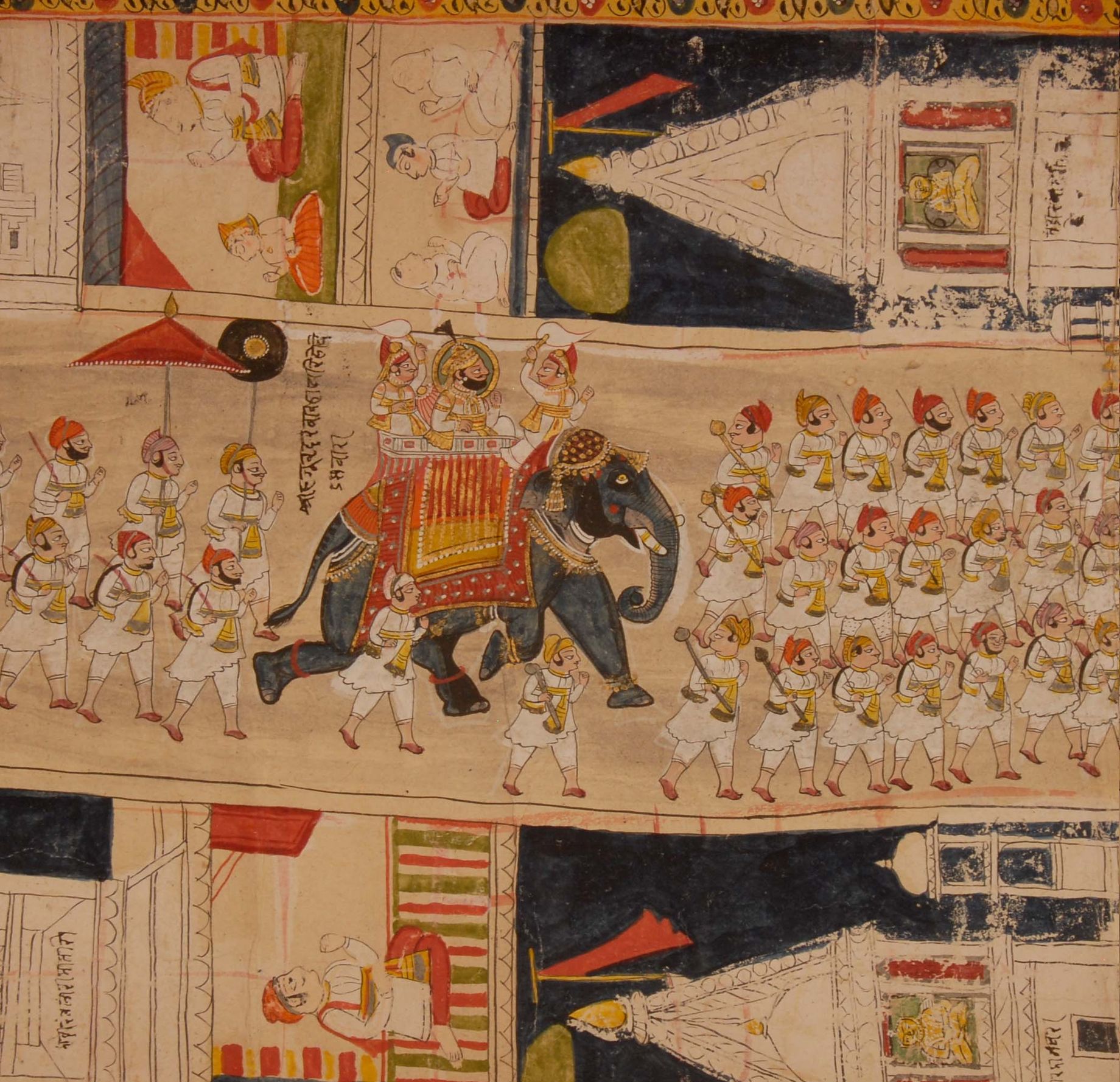Feeling of a Place: Art, Affect and Authority Between Mughal and British Empires
Painters from the city of Udaipur in Northwestern India specialized in picturing places – the courtly worlds and cities of rajas, sacralized landscapes of many gods, and bazaars bustling with merchants, pilgrims, and craftsmen. These wide-ranging eighteenth and nineteenth century objects, from large-scale court paintings, three to five feet long, to painted invitation letter-scrolls up to seventy-two feet long, presented Udaipur’s local streets and lake-palaces as well as Northern India’s prominent temples in Banaras and British durbars held in Ajmer. In a time period of profound political and artistic transition, powerful affective pictures of pleasurable and flourishing places and of artistic vibrancy suggest histories distinct from the stories of decadence narrated within colonial textual and visual accounts. As a fellow of Art Histories and Aesthetic Practices, Khera will write her book Feeling of a Place: Art, Affect and Authority Between Mughal and British Empires, which interprets the major aesthetic, epistemic and political shifts that shaped the art of place and landscape from late seventeenth to mid-nineteenth century South Asia. What did it mean for painters to envision the feeling of a place? How did painters forge sentimental ways to attach themselves and their audiences to particular locales and to constitute the effective power of diverse patrons? By tracing the circulation of people, objects and ideas within local and global circuits from hitherto unexamined place-centric pictures, this book questions the disciplinary boundaries that divide arts and histories of courtly, pilgrimage, mercantile and Indo-British worlds. The connections painters established across the spheres of art, architecture, literature, politics, trade and religion, in turn, challenge the divisions that shape our disciplinary frameworks.



